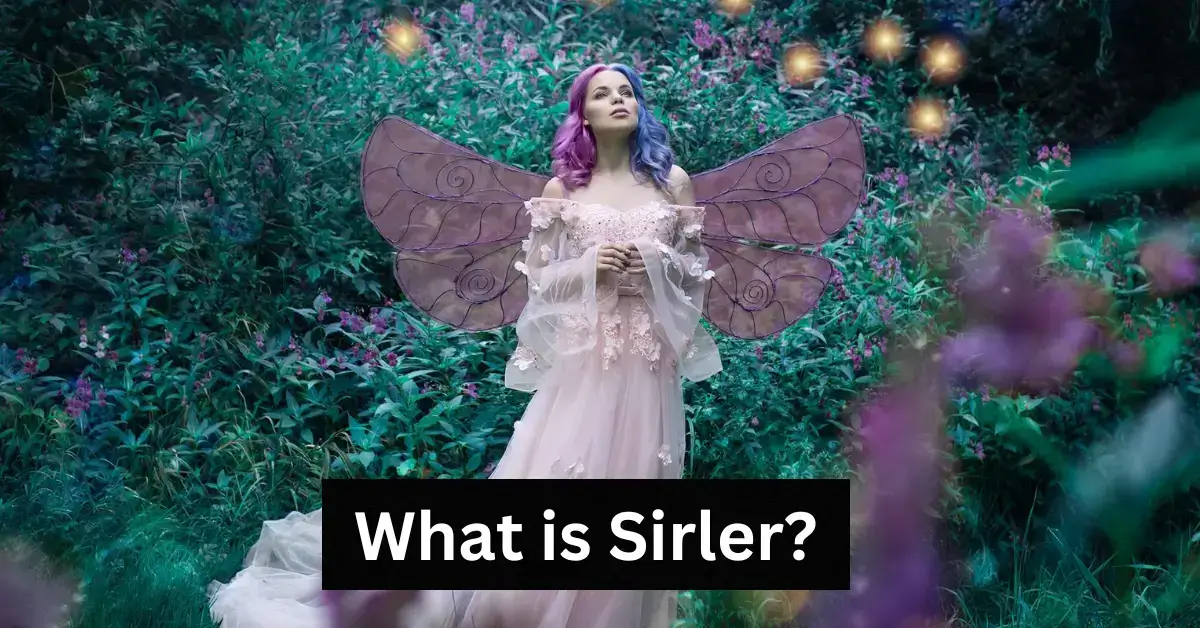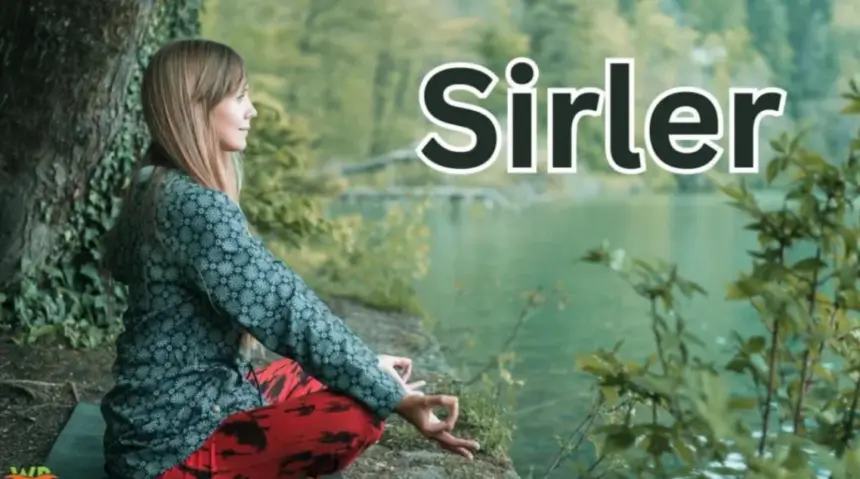
Sirler: Unveiling the Mystical Guardians of Nature and Folklore

In the rich tapestry of global folklore, few beings capture the imagination as profoundly as Sirler. These mythical beings, often depicted as guardians of nature and ethereal entities, are steeped in ancient myths and legends.
Their stories are passed down through generations, and they have evolved into symbols of both protection and mystery. The enigmatic presence of Sirler in various cultures highlights the deep connection between humans and the natural world, as well as the ever-present fascination with the supernatural.
Sirler are more than just mythical creatures; they are embodiments of the supernatural phenomena that have puzzled and intrigued humanity for centuries. Their origins, characteristics, and cultural significance offer a unique glimpse into how different societies interpret the unknown.
In this article, we will explore the essence of Sirler, delving into their characteristics, cultural importance, and the various interpretations that have emerged over time. Through this exploration, we aim to build trust in the reader by providing a comprehensive understanding of these mystical beings, rooted in both folklore and scholarly research.
What is Sirler?
Sirler are supernatural entities often depicted as ethereal beings that dwell in liminal spaces—those in-between realms where the ordinary meets the extraordinary. These beings are typically seen as guardians of nature, charged with the protection of forests, rivers, and other natural elements. They are often associated with elemental spirits, embodying the forces of earth, water, air, and fire. In many cultures, Sirler are revered as protectors who maintain the balance between humanity and the natural world.
The concept of Sirler varies across different cultures, with each region offering its unique interpretation of these beings. In some traditions, they are seen as benevolent spirits who guide and protect, while in others, they may take on a more trickster-like role, testing the morals and resolve of those they encounter.
Despite these variations, a common thread runs through all depictions of Sirler—they are beings of immense power and mystery, often existing just beyond the reach of human understanding.
Characteristics and Appearance
The appearance of Sirler is as diverse as the cultures that believe in them. Typically, they are depicted as ethereal beings, possessing a form that is both human-like and otherworldly. Their physical attributes often include glowing skin, delicate wings, and an aura that exudes a sense of calm and power. These beings are usually portrayed as beautiful, almost angelic, with an unearthly grace that sets them apart from ordinary humans.
However, their appearance can also be deceptive. In some folklore, Sirler are described as shapeshifters, capable of taking on various forms to blend into their surroundings or to trick those who cross their path. This duality in their characteristics—both protective and mischievous—adds to their mystique, making them figures of both reverence and caution in the cultural narratives where they appear.
Cultural Significance
Sirler hold a special place in the folklore of many cultures, serving as symbols of the sacred connection between humans and nature. In ancient times, they were often invoked in rituals and ceremonies meant to honor the natural world and seek its protection. These beings were seen as intermediaries between the human world and the divine, capable of influencing natural phenomena such as the weather, harvests, and even the well-being of communities.

The cultural significance of Sirler extends beyond their role as guardians of nature. They also embody the values and beliefs of the societies that venerate them. For instance, in some cultures, Sirler are associated with fertility and prosperity, while in others, they represent the unpredictability of the natural world. This cultural importance underscores the deep respect and awe with which these beings are regarded, reflecting humanity’s enduring fascination with the mysteries of the natural world.
Also Read: MovieOrca
Regional Variations
The concept of Sirler varies widely across different cultures, each offering its unique interpretation of these beings. In European folklore, for example, Sirler are often linked to the faeries and elves of Celtic mythology, beings that inhabit the forests and are known for their mischievous behavior. In contrast, in Asian cultures, Sirler may be seen as spirits of ancestors who continue to watch over their descendants, ensuring the prosperity and protection of their family lines.
In Native American traditions, Sirler might be associated with nature spirits, revered as protectors of specific animals, plants, or natural landmarks. These beings are often depicted as wise and benevolent, guiding their people through visions and dreams. The diversity of these regional variations highlights the universal human need to explain and connect with the natural world through the lens of the supernatural.
Encounters and Legends
Throughout history, there have been countless stories of encounters with Sirler, ranging from the awe-inspiring to the terrifying. In many legends, Sirler appear to those who are lost or in need, offering guidance and protection in times of peril. These encounters often take place in remote, natural settings—deep forests, misty mountains, or tranquil riversides—places where the boundary between the physical and spiritual worlds is thin.
One of the most famous legends involving Sirler is the story of a traveler who, lost in a dense forest, is guided back to safety by a luminous being. This Sirler, described as having glowing skin and a serene presence, leads the traveler through the darkness, disappearing as soon as they reach the edge of the forest. Such stories have been passed down through generations, serving as both cautionary tales and reminders of the benevolent forces that exist beyond our understanding.
Modern Interpretations
In contemporary times, the concept of Sirler has evolved, influenced by modern literature, art, and media. While they may no longer be widely believed in as literal beings, Sirler continue to captivate the imagination, appearing in various forms in books, movies, and even video games.
These modern interpretations often draw on the traditional characteristics of Sirler—ethereal beauty, supernatural powers, and a deep connection to nature—while also infusing them with new, creative elements that resonate with today’s audiences.
The influence of Sirler can be seen in the rise of fantasy genres that explore the intersection of the natural and supernatural worlds. Authors and artists have reimagined Sirler as characters in epic tales of adventure, often portraying them as powerful allies or formidable adversaries. These modern interpretations ensure that the legacy of Sirler remains alive, continuing to inspire and intrigue new generations.
Influence on Literature, Art, and Media
The impact of Sirler on literature, art, and media is profound. From the enchanting faeries of Shakespeare’s A Midsummer Night’s Dream to the mystical creatures in J.R.R. Tolkien’s Middle-earth, Sirler-like beings have been a staple in storytelling for centuries. Their presence in these works often serves to highlight the tension between the natural world and human society, exploring themes of harmony, conflict, and the unknown.
In visual art, Sirler are often depicted in ways that emphasize their otherworldly nature. Paintings and illustrations featuring these beings frequently portray them in ethereal landscapes, surrounded by lush forests or shimmering waters.
This artistic representation not only captures the beauty and mystery of Sirler but also reinforces their role as protectors of the natural world. In media, Sirler-inspired characters continue to appear in films, television shows, and even video games, reflecting the enduring appeal of these mythical beings.
Contemporary Beliefs and Superstitions
Despite the advancements in science and technology, belief in Sirler and similar beings persists in some communities. These contemporary beliefs often take the form of superstitions, with people adhering to certain practices to either attract the favor of Sirler or protect themselves from their influence. For example, in some cultures, it is believed that leaving offerings of food or flowers in the forest will appease the Sirler and ensure good fortune.
These superstitions are often passed down through generations, becoming an integral part of the cultural fabric. They reflect a deep-seated respect for the natural world and a recognition of forces beyond human control. While these beliefs may seem quaint or outdated to some, they continue to play a significant role in the lives of those who hold them, offering comfort and a sense of connection to the mystical aspects of the world.
Scientific Explanations
From a scientific perspective, the belief in Sirler and similar beings can be explained through the lens of psychology and sociology. Some researchers suggest that these beings are manifestations of the human mind’s attempt to make sense of the natural world, particularly in the face of phenomena that are difficult to explain. The concept of Sirler, with their roles as guardians of nature and supernatural entities, may be rooted in early human efforts to understand and respect the forces of nature.
Sociologically, the stories and beliefs surrounding Sirler can be seen as a reflection of societal values and norms. In many cultures, these beings embody the principles of harmony with nature, reverence for the environment, and the importance of maintaining balance in the world. The persistence of Sirler in folklore and modern interpretations alike underscores the enduring human need to connect with something greater than ourselves, even in an age of scientific reasoning.
Impact on Society
The influence of Sirler extends beyond folklore and superstition, impacting various aspects of society. In communities where belief in these beings is strong, Sirler play a role in shaping cultural practices, rituals, and even environmental conservation efforts. For example, certain forests or natural landmarks believed to be inhabited by Sirler may be protected and preserved as sacred spaces, reflecting the community’s respect for both the natural world and the supernatural beings that are believed to dwell there.

On a broader scale, the concept of Sirler and similar beings can influence societal attitudes towards nature and the environment. The idea that there are guardians watching over the natural world can inspire a sense of responsibility and stewardship, encouraging sustainable practices and a deeper appreciation for the planet’s ecosystems. In this way, the legacy of Sirler continues to resonate in contemporary society, fostering a connectionwith nature that transcends time and culture.
Controversies and Debates
While the allure of Sirler is undeniable, their existence and the stories surrounding them have been subjects of debate. Scholars and skeptics alike question the origins of these beings, suggesting that they may be the products of human imagination rather than actual supernatural entities. These debates often center on whether Sirler are purely mythological or if they have a basis in real encounters with unknown phenomena.
Some controversies arise from conflicting interpretations of Sirler across different cultures. For example, while one culture might view Sirler as benevolent protectors, another might see them as malevolent tricksters. This divergence can lead to misunderstandings and disagreements about the true nature of these beings. Despite these controversies, the stories of Sirler continue to thrive, adding to the richness and diversity of global folklore.
Skepticism and Debunking Efforts
In modern times, the rise of scientific inquiry and skepticism has led to efforts to debunk the existence of Sirler. Researchers in fields such as psychology and anthropology often seek to explain the belief in these beings as a result of cognitive biases, cultural influences, and the human tendency to anthropomorphize natural elements. Some suggest that stories of Sirler may stem from natural occurrences, such as mistaking a tree’s shadow for a ghostly figure or hearing unexplained sounds in the wilderness.
Despite these efforts, belief in Sirler persists in various parts of the world, particularly in regions where folklore plays a significant role in daily life. Skepticism, while challenging the existence of these beings, has not entirely erased them from the collective consciousness. Instead, it has added another layer to the ongoing dialogue between belief and science, highlighting the complexity of human understanding and the enduring power of myth.
Controversial Incidents or Claims
There have been numerous claims and reports of encounters with Sirler over the years, some of which have sparked significant controversy. These incidents often involve individuals or groups who claim to have seen or interacted with these beings in remote, natural settings. While some of these claims are dismissed as hoaxes or misinterpretations, others have captured the public’s imagination, fueling further speculation and debate.
One such controversial incident occurred when a group of hikers in a dense forest reported being guided by a luminous figure, believed to be a Sirler, after becoming lost. The hikers described the figure as having an otherworldly appearance and leading them to safety before disappearing without a trace. While skeptics were quick to dismiss the story as a hallucination or fabrication, the incident gained significant attention and remains a topic of discussion among believers and skeptics alike.
Sirler in Pop Culture
The influence of Sirler extends beyond folklore and into popular culture, where they continue to captivate audiences. In movies, books, and music, Sirler-like beings are often depicted as mystical creatures with powers that defy human understanding. These portrayals range from the benevolent and wise to the mischievous and dangerous, reflecting the dual nature of these beings in traditional lore.
In literature, Sirler-inspired characters can be found in fantasy novels, where they often play pivotal roles in the narrative. These characters, while rooted in traditional folklore, are often reimagined to fit the modern context, appealing to contemporary audiences. Similarly, in movies and television shows, Sirler-like beings are frequently featured as enigmatic figures who challenge the protagonists and add depth to the storyline.
References in Movies, Books, and Music
The presence of Sirler in pop culture is not limited to visual media. In music, these beings are often referenced in lyrics that evoke a sense of mystery and wonder. Songs that mention Sirler or similar entities typically draw on their ethereal qualities, using them as metaphors for the unknown or the unattainable. In books, Sirler-like creatures are a staple of the fantasy genre, where they are depicted as powerful beings with the ability to influence the fate of the world.
One of the most notable examples of Sirler in literature is the depiction of faerie-like creatures in J.R.R. Tolkien’s The Lord of the Rings series. These beings, while not directly named Sirler, share many characteristics with them, including their connection to nature and their otherworldly powers. Similarly, in films like Pan’s Labyrinth, creatures that resemble Sirler play key roles in the story, blending the lines between reality and fantasy.
Sirler-Inspired Merchandise and Trends
The fascination with Sirler has also given rise to various forms of merchandise and trends. From clothing and jewelry to home decor and art, products inspired by these mystical beings are popular among those who are drawn to their ethereal beauty and mysterious nature. These items often feature imagery that evokes the qualities associated with Sirler, such as delicate wings, glowing auras, and natural motifs.
In addition to physical merchandise, there has been a growing trend of Sirler-inspired experiences, such as immersive art installations and fantasy-themed events. These experiences allow participants to step into a world where the line between the natural and supernatural is blurred, offering a glimpse into the mystical realm of Sirler. These trends not only keep the myth of Sirler alive but also introduce them to new audiences who may not be familiar with the traditional folklore.
Protective Measures Against Sirlers
Throughout history, various cultures have developed protective measures to guard against the influence of Sirler. These measures often involve rituals, charms, and talismans designed to ward off these beings or appease them to ensure protection. In some traditions, offerings of food, drink, or flowers are left in places believed to be inhabited by Sirler, as a way to show respect and avoid their wrath.
Other protective measures include the use of symbols or objects believed to repel Sirler, such as iron, salt, or specific herbs. These practices are rooted in the belief that Sirler, like many supernatural entities, can be kept at bay with the right combination of elements. While these measures may seem superstitious to some, they continue to be an important aspect of the cultural practices in communities where belief in Sirler remains strong.
Research and Studies
The study of Sirler and similar beings falls within the broader field of folklore and anthropology. Researchers in these fields seek to understand the origins, meanings, and functions of these beings in different cultures. Through the analysis of myths, legends, and oral traditions, scholars aim to uncover the underlying themes and beliefs that give rise to the concept of Sirler.

Recent studies have also explored the psychological and social factors that contribute to the belief in Sirler. These studies suggest that such beliefs may serve as a coping mechanism for dealing with the uncertainties of life and the fear of the unknown. By examining the role of Sirler in various cultural contexts, researchers hope to shed light on the universal human need to create stories that explain and give meaning to the world around us.
Community Beliefs and Practices
In many communities, belief in Sirler is not just a matter of folklore but a living tradition that influences daily life. These beliefs are often expressed through community practices, such as festivals, rituals, and storytelling. In some regions, entire communities may participate in ceremonies designed to honor or appease the Sirler, reflecting the deep cultural significance of these beings.
Storytelling plays a crucial role in keeping the belief in Sirler alive. Elders often pass down tales of encounters with these beings, ensuring that the younger generation continues to respect and fear the Sirler. These stories serve as both entertainment and moral lessons, teaching listeners about the consequences of disrespecting nature or failing to heed the warnings of the supernatural.
Quick Facts
- Name: Sirler
- Nature: Ethereal beings, guardians of nature
- Origin: Various cultures, with regional variations
- Characteristics: Often depicted with glowing skin, wings, and otherworldly grace
- Role: Protectors of natural elements, sometimes tricksters
- Cultural Impact: Influences folklore, art, literature, and modern media
Conclusion
Sirler, with their deep roots in mythology and folklore, continue to be figures of fascination and reverence. Whether viewed as guardians of nature, mischievous tricksters, or symbols of the unknown, these ethereal beings offer a unique lens through which to explore the human experience. Their enduring presence in both traditional and modern contexts highlights the timeless nature of the stories we tell to make sense of the world around us.
As we continue to grapple with the mysteries of the natural world and our place within it, the legends of Sirler remind us of the importance of respecting the forces that exist beyond our understanding. Whether through literature, art, or personal belief, the legacy of Sirler lives on, inspiring awe and wonder in those who encounter their stories.
Also Read: Totally Wackadoodle
FAQs
What are Sirler?
Sirler are mythical beings often depicted as guardians of nature and supernatural entities. They are believed to protect natural elements and maintain the balance between the human and natural worlds.
Do people still believe in Sirler today?
Yes, belief in Sirler persists in some communities, particularly in regions where folklore plays a significant role in cultural practices. These beliefs are often expressed through rituals, offerings, and storytelling.
Are there any modern depictions of Sirler in pop culture?
Yes, Sirler and similar beings frequently appear in modern literature, movies, and music. They are often depicted as mystical creatures with powers that defy human understanding, continuing to captivate audiences with their otherworldly allure.
Can science explain the belief in Sirler?
While science has not proven the existence of Sirler, some researchers suggest that belief in these beings may be rooted in psychological and sociocultural factors. These beliefs may serve as a way for people to make sense of the natural world and the unknown.









